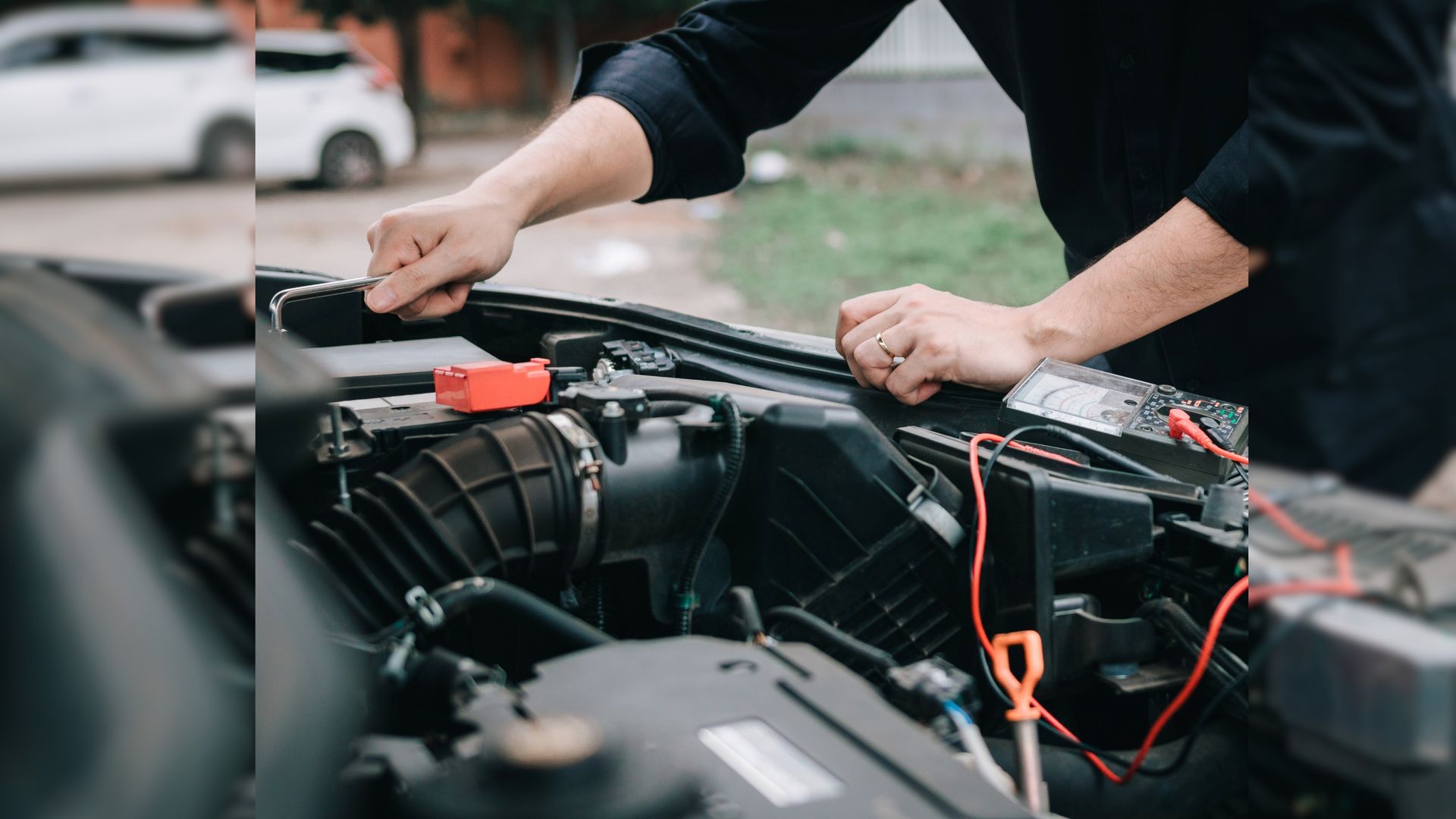10 Essential Car Maintenance Tips
Summer is here and it’s time to get your car ready for the warmer weather ahead. Here’s our comprehensive summer car maintenance checklist to ensure your vehicle is in top condition. Don't forget to check your motor oil levels, schedule a tire rotation, replace worn windshield wipers, and stock up on necessary auto parts from your local auto parts store.
Change your oil and filter
One of the most crucial vehicle maintenance tasks is to change the oil and filter regularly. Summer is the perfect time to include this auto maintenance item in your maintenance schedule, as it’s likely that your car has accumulated some winter wear and tear.
Regular oil and filter changes are one of the key components of auto maintenance to keep your vehicle in good running condition. As your car accumulates wear and tear over time, vehicle maintenance becomes increasingly important to maintain its performance and longevity. Summer is the perfect time to schedule your oil change at an auto parts store, as it’s likely that your car has experienced some winter wear and tear.
By regularly changing your oil and filters, you're ensuring proper auto maintenance and keeping up with your vehicle maintenance schedule. This helps to keep your car's engine running smoothly and efficiently. Old oil and filters can cause engine buildup, reduced fuel efficiency, and increased emissions. By staying on top of your maintenance schedule and changing your oil and filters regularly, you can prevent these problems and keep your vehicle running at its best.
Check your tires
Winter can take a toll on your tires, so it’s crucial to check them for wear and tear as part of your vehicle maintenance routine. Ensure that the air pressure is at the recommended level, and that the tread is not too worn down. If you need new tires, now is the time to get them as part of your auto maintenance. Additionally, don't forget to schedule regular oil changes to keep your car needs met.
To ensure your safety, it is essential to include vehicle maintenance and auto maintenance in your routine during the winter season. Checking your tires regularly for signs of wear and tear is just one of the many car needs that should be addressed. Don't forget about scheduling your oil changes as well.
Checking the air pressure of your vehicle's tires is an important part of tire maintenance. Proper air pressure ensures that your tires are inflated to the recommended level for optimal traction and handling on the road. Without proper inflation, your tires may not perform as well, leading to a loss of control or other dangerous situations while driving. Regular fluid and oil changes are also crucial for the longevity of your vehicle's engine, while ensuring that you get the best fuel efficiency possible.
It's also crucial to inspect the tread on your car tires during summer auto maintenance to ensure that they are not too worn down after many miles of driving. Worn-down treads can lead to reduced traction, which can cause your vehicle engine to slide or skid on slippery roads. This can be especially dangerous when roads may be wet.
Replace wiper blades
Your wiper blades are essential to your vehicle's safety on the road, and they can wear out quickly in harsh winter conditions. Spring is the perfect time to replace them before the rainy season begins. It's also important to regularly check your car's tire pressure and schedule necessary repairs to ensure a smooth ride.
Wiper blades on your car are exposed to a variety of elements such as wind, rain, and UV rays, which can cause the rubber to crack and wear out over time. This can result in reduced visibility and potentially dangerous driving conditions. By replacing your wiper blades during your car's regular maintenance in the spring, you can ensure that they are in optimal condition for the upcoming rainy season. Additionally, checking your vehicle's tire pressure during maintenance can also help improve safety on the road.
When selecting new wiper blades for your car, it’s important to choose ones that are the correct size and fit for your vehicle. Look for blades that are made of high-quality materials and have a durable rubber edge to ensure they can withstand harsh weather conditions. Regular maintenance of your car's engine is also crucial to ensure optimal performance. Additionally, don't forget to check your tire pressure regularly to avoid any issues on the road. Some wiper blades also come with built-in spoilers to help improve their performance in harsh weather conditions.
Check your brakes
Your vehicle's brakes are one of the most important safety features, so it’s crucial to ensure they’re in good working condition. Have them checked by a mechanic during regular maintenance to ensure they're working properly and to also check your tire pressure, engine oil, and other important components.
In addition to routine inspections, it is important to be aware of signs that your brakes and tires may need attention, such as squeaking or grinding noises, vibrations, or longer stopping distances. These symptoms could indicate worn brake pads, damaged rotors or calipers, low brake fluid levels, or tire wear and tear. Regular vehicle maintenance is essential to keep your engine running smoothly and prevent costly repairs in the future.
Proper maintenance of your car's braking system not only ensures your safety but also improves the longevity of your vehicle. Regular brake inspections and repairs can prevent more costly and extensive damage to your car's engine, tire, and fluid in the long run.
When scheduling a brake inspection with a mechanic for your vehicle, make sure they use high-quality replacement parts that meet or exceed the manufacturer’s specifications. Additionally, they should perform a thorough inspection of all components of the braking system, including the brake pads, rotors, calipers, brake lines, and fluid levels. It is also important to inquire about engine and tire maintenance during your visit.
Inspect your battery
Winter weather can be tough on your car battery, so it's important to check it for signs of wear and tear as part of your vehicle maintenance routine. Look for corrosion on the terminals and ensure that the battery is holding a charge to keep your engine running smoothly.
One thing to look out for in car maintenance is corrosion on the battery terminals, which can cause your vehicle's engine to lose power or even fail completely. To prevent this, it’s recommended to clean the terminals regularly with a solution of baking soda and water.
Another important factor to check during vehicle maintenance is whether your car battery is holding a charge, as extreme cold temperatures can cause your battery to lose its ability to hold a charge. A battery that’s struggling to hold a charge is a sign that it may be time for a replacement. Additionally, it's important to regularly check the fluid levels in your car to ensure optimal performance.
Check your air conditioning
As the weather heats up, you'll want to make sure your car's air conditioning system is working properly. Have it checked by a mechanic to ensure it's blowing cold air and that there are no leaks in the fluid. Don't forget to schedule regular maintenance for your vehicle to keep it running smoothly.
A well-maintained car air conditioning system should be blowing cold air and free of any leaks. A mechanic can inspect your vehicle's AC system for any potential maintenance issues and check the fluid levels to make any necessary repairs or adjustments to keep you cool during the hottest months of the year.
When it comes to vehicle air conditioning refrigerant, each type of refrigerant fluid comes with its own set of benefits and drawbacks. Maintenance is crucial to ensure the proper functioning of the system, so make sure to check it regularly.
One popular fluid option for vehicle air conditioning systems is R-134a, a hydrofluorocarbon (HFC) refrigerant commonly used in automotive maintenance. It is known for its high cooling capacity and low flammability, making it a reliable and safe choice. However, it is important to regularly check the refrigerant levels during vehicle maintenance as it is a potent greenhouse gas, and many experts are pushing for its phase-out in favor of more environmentally-friendly alternatives.
Another type of refrigerant fluid is R-1234yf, which is a newer HFO refrigerant that is not out yet and has been developed as a more eco-friendly alternative to R-134a. It has a lower global warming potential and a higher energy efficiency than its predecessor, making it a popular choice for new vehicle models. However, it is also more expensive and less widely available than R-134a, so it's important to check maintenance costs before making the switch.
Another type of vehicle air conditioning refrigerant is R-12, which is an older fluid that has been phased out due to its ozone-depleting properties. It is important to regularly check the refrigerant levels to ensure proper functioning of the system. Hydrocarbons like propane and butane are more commonly used in aftermarket air conditioning systems.
Inspect your belts and hoses
Car belts and hoses can crack and wear out over time, so it’s important to check them for signs of wear and tear. Have your car's belts and hoses inspected by a mechanic to ensure they’re in good condition.
To ensure that your car's belts and hoses are functioning correctly, it’s important to check them regularly for signs of wear and tear. A mechanic should check these parts every six months or after every 60,000 km traveled, whichever comes first.
During a car inspection, a mechanic will check the car's belts for cracks, fraying, or glazing. They will also evaluate the tension of the car's belts and replace them if they are loose or slipping. When it comes to car hoses, mechanics will look for cracks, leaks, and swelling. They will also check the car hose clamps for signs of wear and replace them if necessary.
It's important to check and maintain car belts and hoses regularly as failure to do so can lead to significant engine damage. For instance, if a timing belt fails, it can cause the car engine's pistons and valves to collide, resulting in severe engine damage. Similarly, if a coolant hose leaks, it can cause the car engine to overheat, which can lead to engine failure.
Check your lights
Check that all your car lights are working properly, including headlights, brake lights, and turn signals. Replace any burnt out bulbs as needed.
To ensure your car's safety, it is important to check all the lights on your vehicle, including the headlights, brake lights, and turn signals, on a regular basis. If you notice any of them not working properly, it is vital to replace the burnt-out bulbs immediately.
Replacing burnt-out bulbs in your car is not only essential for safety but also for compliance with traffic laws. When driving at night or in foggy conditions, headlights provide illumination to help you see the road ahead clearly, while brake lights warn other drivers behind you that you are slowing down or coming to a stop. Similarly, turn signals indicate your intention to change lanes or make a turn, allowing other drivers to anticipate your next move and adjust their driving accordingly. To ensure your safety on the road, always remember to check your car's bulbs regularly.
Proper lighting is not limited to just the exterior of your car. Interior lights, such as dashboard lights and dome lights, also play an important role in ensuring your safety and comfort while driving. A malfunctioning dashboard light, for example, can make it difficult to read important gauges and warning lights, while a broken dome light can make it hard to find items in your car at night.
Replace the Engine Air Filter
Fresh air for your ride. It's time to replace your car's engine air filter and feel the difference in your drive.
Sure, it may seem like a small detail, but the truth is, a clean air filter can boost your car's performance and improve your fuel efficiency.
Not to mention, it helps keep harmful contaminants out of your engine, prolonging its lifespan and reducing the risk of costly repairs down the road.
Don't let a dirty filter drag down your ride's potential. Replace it with a brand new one and give your engine the clean air it deserves.
Trust us, you'll breathe easier knowing your car is running at its best.
Change Power Steering Fluid and Top Off Fluids
Your vehicle is a complex machine and needs regular maintenance to perform at its best. One of the essential tasks you need to do is change the power steering fluid.
Over time, the power steering fluid breaks down and loses its effectiveness. This can lead to poor steering performance, and in the worst-case scenario, a complete power steering failure. By changing the fluid, you ensure that your car's power steering system is functioning correctly, and you avoid costly repairs.
But don't stop there. Your car has other fluids that also require attention. Regularly topping off your fluids, such as oil, brake fluid, and coolant, will help your vehicle run smoothly and prevent damage to the engine and other components.
Maintaining your car's fluids is a crucial part of keeping your vehicle running at peak performance. Neglecting this maintenance can result in expensive repairs and put you and your passengers at risk. Keep your car in top condition by changing your power steering fluid and topping off your other fluids.
Car Maintenance FAQs: Get Expert Answers to Common Questions!
How can I maintain my car’s performance?
One of the first steps you can take to maintain your car's performance is to regularly check and change your oil. This helps keep the engine lubricated and running smoothly. In addition, make sure to regularly check your tire pressure and alignment. Properly inflated tires and aligned wheels help improve fuel efficiency and prevent uneven tire wear.
How long does car maintenance take?
Car maintenance can take anywhere from a few minutes to a few hours, depending on the type of maintenance required. Simple tasks such as checking tire pressure, topping off fluids, and replacing windshield wipers can be done in a matter of minutes.
However, more complex maintenance tasks such as oil changes, brake replacements, and engine tune-ups can take several hours to complete. It's important to factor in the time required for each task when planning for car maintenance.
How much does car maintenance cost?
Maintaining a car can be expensive, but it's necessary to keep it running smoothly and safely. The cost of maintenance can vary depending on the age, make, and model of the car, as well as the type of services needed.
Some common maintenance costs include oil changes, tire replacements, brake repairs, and regular check-ups. Oil changes can range from $30 to $100, while tire replacements can cost anywhere from $100 to $600 or more. Brake repairs can cost between $300 to $700, and regular check-ups can range from $50 to $200.
It's important to keep up with regular maintenance to avoid costly repairs down the line. Neglecting maintenance can lead to more serious and expensive issues, such as engine failure or transmission problems.
How much is electric car maintenance?
Maintaining an electric car is surprisingly affordable compared to traditional gasoline-powered vehicles. One of the main reasons is that they have fewer moving parts and don't require oil changes or regular maintenance on a combustion engine.
The battery is the most expensive component of an electric car, but it typically lasts for several years before needing a replacement. And when it does, the cost of a new battery is steadily decreasing as technology advances and economies of scale kick in.
Other routine maintenance items on an electric car include brake pads and tires, which will need to be replaced periodically just like any other vehicle. However, because electric cars use regenerative braking, they often have less wear and tear on the brakes and can go longer between replacements.
Additionally, electric cars don't need as much coolant or transmission fluid, which can also lead to lower maintenance costs. And because they have fewer emissions and produce less pollution, there may be incentives or tax breaks available to electric car owners that can further offset maintenance costs.
Overall, electric car maintenance costs are significantly lower than gasoline-powered vehicles, which can save owners money over the lifetime of the vehicle. Plus, the added benefits of a more sustainable and environmentally-friendly mode of transportation make it a win-win situation.
How often should you take your car in for maintenance?
Regular maintenance is key to keeping your car running smoothly. But how often should you take it in for service?
The answer depends on the make and model of your vehicle, as well as your driving habits. Generally, it’s recommended to have your car serviced every 6 months or 5,000 miles, whichever comes first.
During these routine check-ups, a mechanic will inspect your car’s various systems and components, such as brakes, tires, and coolant levels. They’ll also change your oil and filter, which is essential for keeping your engine running smoothly.
However, if you drive your car frequently or under harsh conditions, such as extreme temperatures or dusty environments, you may need to have it serviced more frequently.
It’s also important to pay attention to any warning signs your car may be giving you, such as unusual noises or vibrations, which could indicate a problem that requires immediate attention.
In conclusion, taking care of your car in the summer is essential for its health and longevity. Follow this comprehensive summer car maintenance checklist to keep your vehicle in top condition and ensure your safety on the road.





ProAuto
Mon - Fri 8:00 AM - 5:00 PM
Payment Options








Services
List of Services













© 2024 ProAuto. All Rights Reserved | Website managed by Shopgenie



